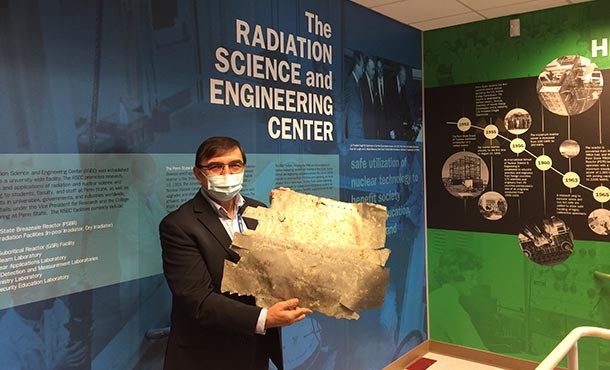Amelia Earhart's disappearance has long been a mystery, but now, scientists are hoping to help unearth clues to what actually happened during the pilot's doomed flight around the world, and it seems like they will be using a nuclear reactor to help.

Unearthing Clues of Amelia Earhart's Disappearance
According to Popular Mechanics, scientists from the Penn State University will use particle physics in order to test whether a piece of metal that was found by Ric Gillespie in 1991 is indeed a part of Earhart's Lockheed Model 10-E Electra.
So, how will a nuclear reactor help?
In the report, the manager of the engineering program for the Penn State Radiation Science and Engineering Center (RSEC), Daniel Beck, invited Gillespie to bring the alleged plane debris to the university.
Beck said that they could be able to run some relevant analysis that could match with the ongoing genetic testing that scientists were currently doing with the suspected remains of the pilot.
With the nuclear beams that come from the Breazeale Nuclear Reactor that acts like an X-ray, Beck and his colleagues would be able to see trace amount of things such as paint that has worn off for the naked eye to see.
Read Also : GoPro Accidentally Captures Strange, Mysterious Creatures Living Underneath Half Mile of Antarctic Ice
Using a Nuclear Reactor for Analysis
To investigate the metal piece, the experts would set the sample in front of the nuclear beam, then a digital imaging plate will be set behind the sample, and as the nuclear beam passes through the metal into the imaging plate, the image is then recorded and scanned.
"We can use these techniques to look at the surface images and make a qualitative and quantitative determination of ingredients," said Kenan Ünlü, the director of RSEC and professor of nuclear engineering in a recent publication by the Penn State. "I didn't think we'd see much because aluminum is opaque to neutrons and activation analysis reveals mostly aluminum. Since it had been in the sea, we thought maybe we'd see coral buildup, maybe some surface paint on the sample."
With the use of the nuclear reactor, the team was able to see signs of axe marks along the edges, as per Beck, except for one edge of the metal patch that appeared to be repeatedly flexed until it was removed from what it was attached to.
Furthermore, Beck said that they won't be able to Earhart's signature nor something that would confirm if it was indeed part of the Electra.
More Research Required
As of now, the team requires more analysis and will most likely publish their findings on the metal patch in late spring of 2021.
Gillespie, who found the metal patch 300 miles from the Howland Island where Earhart and her navigator, Fred Noonan, are last known to be, also said that the scientists might actually find data that disqualifies the metal patch as part of the Electra, but "prefer the knowing."
Earhart and Noonan disappeared in July 1937 six weeks into their mission of flying across the world.
The United States believes that along the way, the Electra became too heavy and is short on fuel, which caused them to crash into the ocean and got lost in the deep water.
Related Article : Scientist Wants to Prove Time Moves in Different Directions With a Nuclear Reactor, Here's How
This article is owned by Tech Times
Written by: Nhx Tingson




